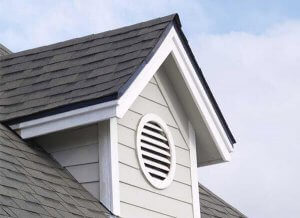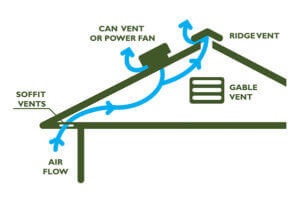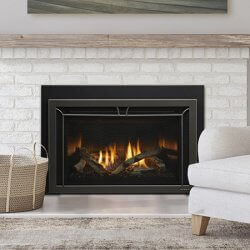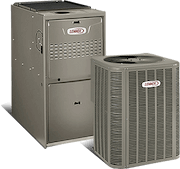
Many people do not realize the importance of attic ventilation. In fact, most homeowners will not bother to ventilate the attic in any way. However, attic ventilation plays a very big role when it comes to protecting your home and your comfort. During winter, attic ventilation helps to protect the roof structures from any damage that can result from trapped moisture. In this article, we are going to look at the importance of attic ventilation as well as how you can go about ensuring your attic is properly ventilated.
For more help and information about your HVAC system and attic ventilation, Galmiche & Sons is an HVAC company that has been serving the residents of St. Louis and the greater region for many years. Our vast experience in all matters concerning HVAC has helped us gain the trust of local residents. If you are looking for professional HVAC technicians, do not hesitate to call us at 314-993-1110 and let us answer all of your heating & air conditioning questions.
What is the Importance of Attic Ventilation?
Attic ventilation contributes to your home’s comfort. It also protects the roof from moisture problems such as frost, wood rot, ice shingles, and mold growth. In the winter, warm air will rise to your attic. This will bring some moisture with it as well. Should this moisture seep into the roof structure, the framing could become damaged.
With proper attic ventilation, the moist air from the inside is allowed to escape to the outside while dry air is allowed inside. This keeps moisture from accumulating in the attic. Attic ventilation also helps to prevent the growth of mold and mildew and helps to keep rodents and other pests away.
Solutions for Attic Ventilation

For proper attic ventilation, it is important to have both intake and exhaust vents installed. The intake vents allow dry air from the outside to enter while the exhaust vents allow the moist air to escape. In order to achieve proper attic ventilation, a ratio of 1:1 is needed for the intake and exhaust vents.
Intake Vents
These are available in three main types:
- Gable vents – These are installed in the gable at the roof’s highest peak point. They can serve as both intake and exhaust vents.
- Under-eave vents – These are continuously perforated vents that are installed under the house’s eave.
- Rafter vents – These are installed in the attic’s rafters and work together with the under-eave vents.
Exhaust Vents
- Ridge vents – These run along the roof’s ridge and are easily disguised by the shingles.
- Turbine vents – These are installed on or close to the roof’s ridge and contain a small fan that turns with the breeze.
Attic Ventilation Fans
In some cases, you may also decide to use mechanical means for ventilation as well. Attic ventilation fans draw in air and expel moist air through the roof vent system. Because they require electricity to run, attic ventilation fans are not as common as the intake and exhaust vents.
Get Attic Ventilation Help From Galmiche & Sons
If you are looking for help with your attic ventilation, Galmiche & Sons is more than happy to assist. Simply call us at 314-993-1110 today and let us take care of all your heating & air conditioning needs in St. Louis and the surrounding areas.









